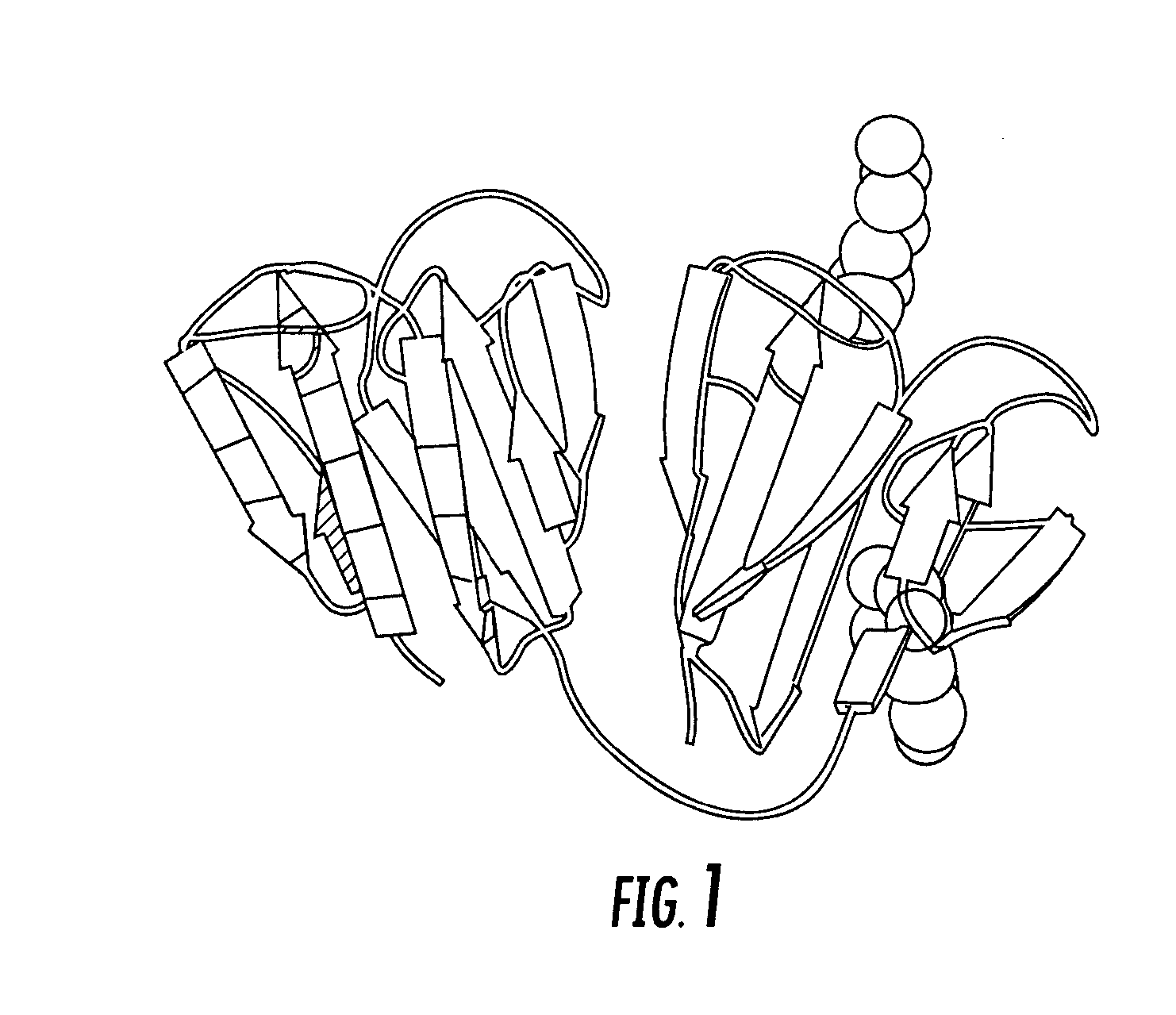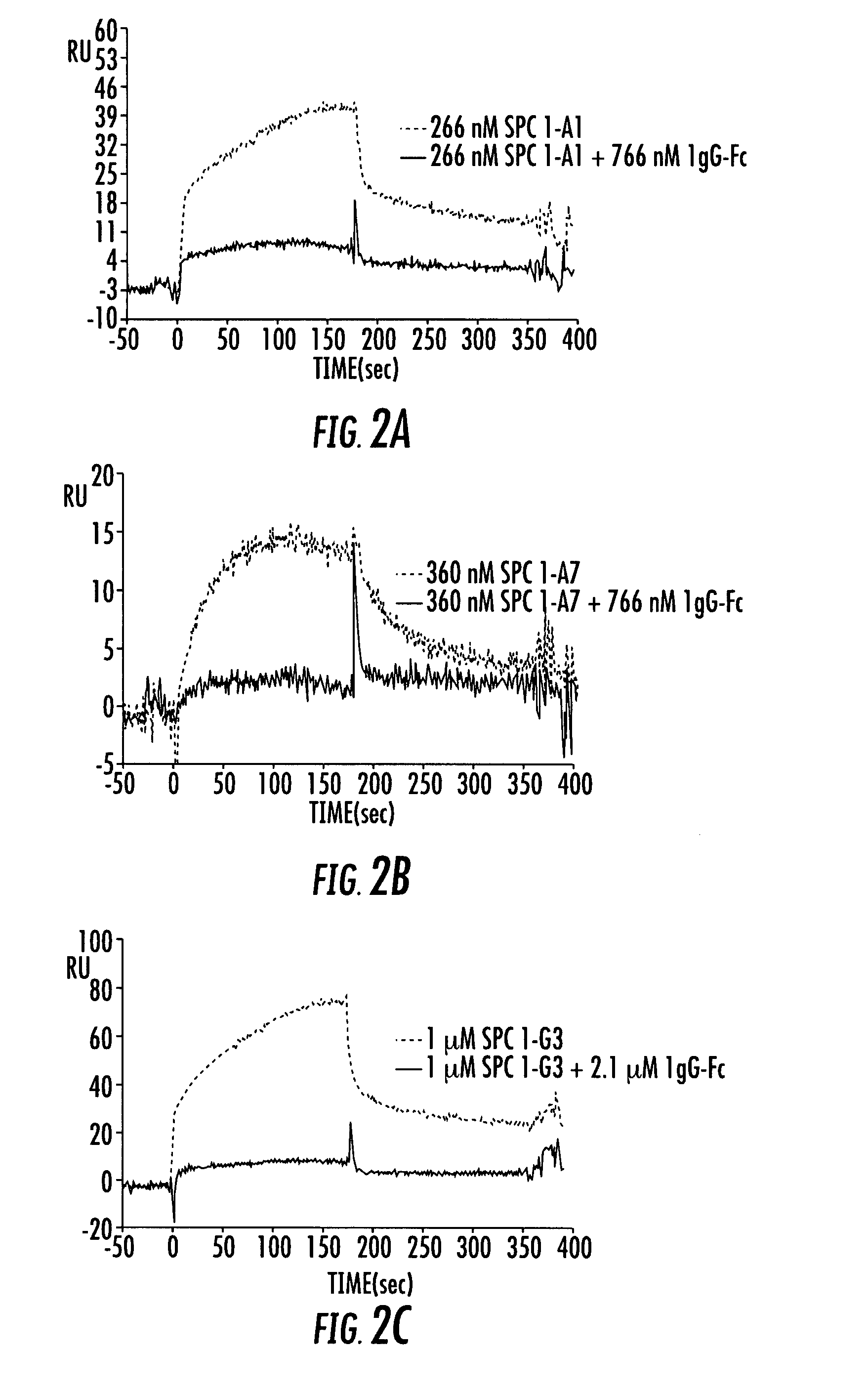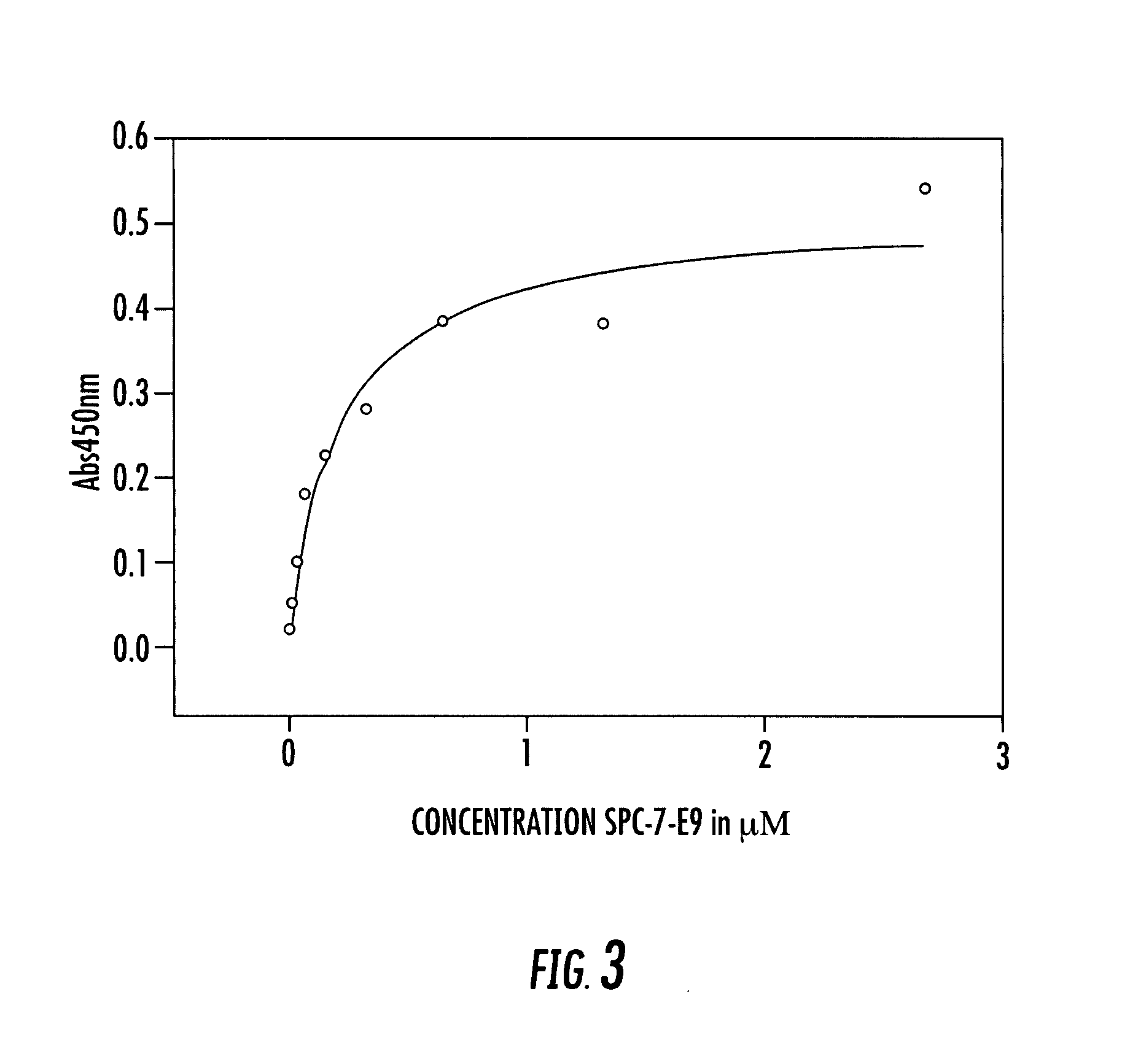Ubiquitin or gamma-crystalline conjugates for use in therapy, diagnosis and chromatography
a technology applied in the field of conjugates, can solve problems such as problematic production of ubiquitin or gamma crystal conjugates
- Summary
- Abstract
- Description
- Claims
- Application Information
AI Technical Summary
Benefits of technology
Problems solved by technology
Method used
Image
Examples
example 1
Selection of Affilin™ Variations Binding to IgG Fc and proNGF from the Human Gamma-II-Crystallin Library, Expression and Purification
[0167] Starting with the human gamma-crystallin library CR20 a selection process was carried out by means of the phage display system. Even after the first round several Affilin™ variations could selected and isolated which showed specific binding to IgG Fc in the single phage ELISA. It should be noted that the term “Affilin™” as used herein corresponds to the polypeptide molecule component according to the invention of the conjugate which is based on ubiquitin or gamma-crystallin and has an altered binding property for specific binding to a ligand compared to the wildtype. Following cloning of the genes into the pET20b expression vector (Novagen) the Affilin™ variations were overexpressed in E. coli (BL21(DE3), Stratagene) in a recombinant manner and subsequently purified in two chromatographic steps (IMAC and gel filtration). In a protein concentra...
example 2
Selection of Affilin™ Variations from the Human Ubiquitin Library (UB10) Against a Cysteine Knot Protein—Expression and Purification
Provision of a Synthetic Ubiguitin Gene for the Selection of Modified Proteins having a Newly Generated Binding Affinity
[0179] Genetic engineering work was performed according to standard protocols known to those skilled in the art such as e.g. those of Sambrook et al. (1989).
[0180] For the preparation of the DNA sequence (Seq ID No. 2) for a modified ubiquitin protein scaffold having the substitutions Ile44Ala, Lys48Arg, Arg54Leu, Val70Ala, Arg72Leu, Gly75Ala as well as the deletion of Gly76 as a starting point for the preparation of artificial binding proteins the procedure was as follows: for gene synthesis a PCR reaction was performed in a volume of 50 μl in which 2.5 μl each of the six oligodeoxynucleotides (Seq ID No. 26, Seq ID No. 27, Seq ID No. 28, Seq ID No. 29, Seq ID No. 30, Seq ID No. 31; 0.1 μM each) representing together in their bas...
example 3
[0193] C-terminal Fusion of Affilin™ with a Cysteine-Containing Peptide Linker for Selective Coupling to Different Molecules
[0194] The following example demonstrates that the Affilin™ variation SPC1-A7 binding to IgG Fc could be selectively coupled to different molecules via a C-terminal cysteine.
[0195] Besides the 7 cysteines localized in the interior of the protein, the Affilin™ variation SPC1-A7 employed already bears a solution-accessible and thus free cysteine in the variable position 4. This was first substituted by a serine using QuickChange® PCR. Starting with this modified Affilin™ (SPC1-A7BB) two glycine and a cysteine as well as four other histidines in addition to the six histidines already present were inserted C-terminally by means of QuickChange® PCR. The purpose of the affinity tag extended to 10 histidines was to enable an improved purification. Titration experiments with Ellmann's reagent have shown that the cysteine introduced is unsuitable for coupling experime...
PUM
| Property | Measurement | Unit |
|---|---|---|
| concentration | aaaaa | aaaaa |
| temperature | aaaaa | aaaaa |
| molecular mass | aaaaa | aaaaa |
Abstract
Description
Claims
Application Information
 Login to View More
Login to View More - R&D
- Intellectual Property
- Life Sciences
- Materials
- Tech Scout
- Unparalleled Data Quality
- Higher Quality Content
- 60% Fewer Hallucinations
Browse by: Latest US Patents, China's latest patents, Technical Efficacy Thesaurus, Application Domain, Technology Topic, Popular Technical Reports.
© 2025 PatSnap. All rights reserved.Legal|Privacy policy|Modern Slavery Act Transparency Statement|Sitemap|About US| Contact US: help@patsnap.com



